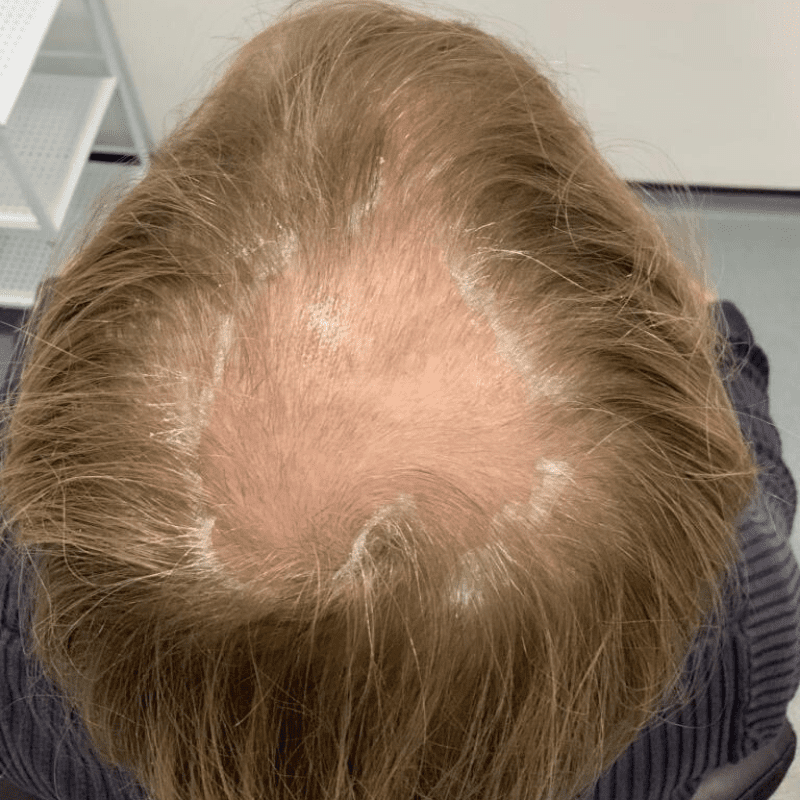One unfortunate thing about getting older is that you tend to experience progressive hair loss. There are small cases of hair loss but there are cases where it is clearly noticeable. However, in order to fully understand hair loss, we must delve into the science behind it. We’ve compiled a list of the types of hair loss for both men and women below.
Men – Androgenic Alopecia
The majority of male hair loss is known as androgenic alopecia, better known as male-pattern baldness. It is so common that more half of all men by the age of 50 will develop androgenic alopecia. It is characterised by a receding hair line on the lateral part of the head and thinning of the hair at the crown. The two preceding sections of hair eventually join together, leaving a noticeable horseshoe-shaped ring of hair around the back of the head.
Unfortunately for men, male-pattern baldness occurs when the hair follicles in the scalp begin to shrink due to a hormone known as dihydrotestosterone (DHT). Testosterone is converted into DHT by an enzyme known as 5-alpha-reductase. DHT then attaches to the androgen receptor within the hair follicle. However, DHT causes the hair follicle to physically shrink in size, meaning that the follicle is no longer able to regrow, resulting in hair loss and no further hair growth.
Women – Androgenic Alopecia

Because of this, the visual nature of female-pattern baldness is much different compared to male-pattern baldness. It is thought that if women possess more androgens, then their hair loss will become similar to that of male-pattern baldness. However, it is not clear if androgens do indeed play a role in the development of female-pattern baldness. In fact, it isn’t clear if any hormones are associated with female-pattern baldness.
However, it is more common for women who are past the menopause to develop female-pattern baldness, suggesting that oestrogen could actually play some sort of role in the progression of female-pattern baldness.
Related reading: Hair transplants for women
Alopecia Areata
This form of alopecia causes small patches of baldness around the scalp that are approximately the size of a coin. Even though this tends to occur on the scalp, it can also occur anywhere on the body. The difference between androgenic alopecia and alopecia areata is that alopecia areata can occur at any age but typically affects teenagers and young adults. It is thought to be an autoimmune disorder in which the body starts to attack its own hair follicles and suppresses hair growth. It is most common in people who suffer with other autoimmune diseases such as an overactive thyroid or diabetes.
In most cases, hair will regrow but in some cases, people can develop a more severe form of hair loss such as alopecia totalis (loss of all scalp hair) and alopecia universalis (loss of all epidermal hair). It is believed that alopecia areata is associated with hereditary traits, as it is suggested that one in five people that suffer with alopecia areata have a family history of the condition.
Trichotillomania and Traction Alopecia
These forms of hair loss are due to trauma to the scalp. Trichotillomania is an obsessive compulsive condition where a person feels like they have to pull their hair out. Since it is a psychological condition, it is difficult to know the causes, but there are some theories that suggest that hair pulling is a type of addiction. So the more you pull out your hair, the more you will want to keep doing it. There are also some theories that suggest it is a way of dealing with stress or anxiety.
Traction alopecia is a type of hair loss that is causes by excessive pulling on the hair on your scalp. It most commonly occurs in people who have very tight ponytails, pigtails, braids or even cornrows. After a while, it can cause the hair line to recede towards the crown and, in extreme cases, can result in permanent hair loss.
There are various types of hair loss but the ones aforementioned are the most common types. There are some types of hair loss that are affiliated with the intake of drugs and medication but they are less common.
By understanding how each of these types of hair loss occurs, it may help you to understand a little more about your hair, especially if you personally suffer with hair loss. It is a sensitive topic to talk about but with the right support from your family, friends and professionals, it will make you a happier, more confident person.
Interested in FUE hair transplants or FUE beard transplants? You can find us at the following hair transplant clinics in the UK:



